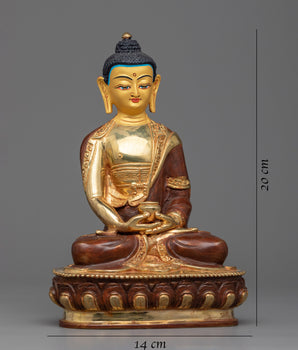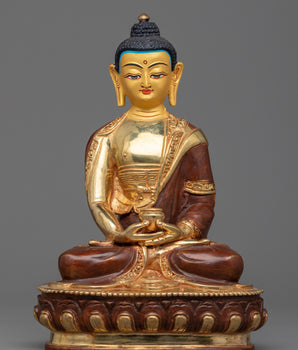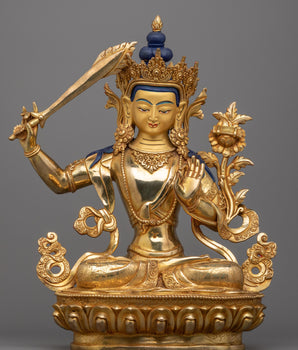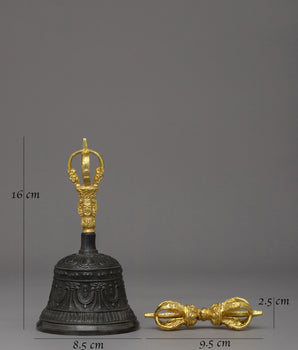
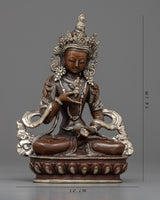

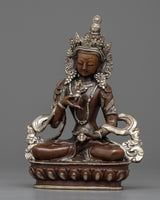
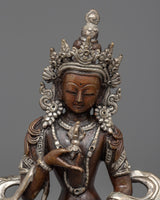
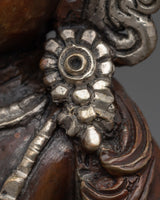
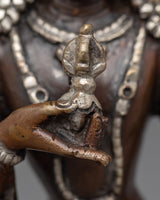
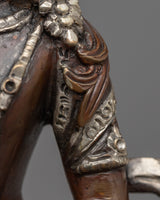
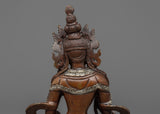

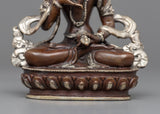
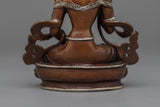
Vajrasattva Statue for Meditation and Ritual | Traditional Handcrafted Buddhist Art

100% AUTHENTIC

HANDMADE

FREE SHIPPING
Handcrafted Vajrasattva Statue Tibetan Dorje Sempa for Meditation and Altars
------------------------------------------------------------
Size: 5.5"/14cm (Height) x 3.9"/10cm (Base)
Weight: 0.544 kg
Material: Oxidized Copper Body, Silver-plated
------------------------------------------------------------
About Our Statue:
This exquisite Vajrasattva statue is a true masterpiece, meticulously hand-carved by skilled artisans in our studio using traditional Himalayan carving techniques that have been passed down through generations in Nepal. The Bodhisattva is depicted in his customary placid and tranquil demeanor, seated on a moon disc lotus seat and in the lotus position, exuding a sense of calm and serenity. In his right hand, he holds a vajra, a symbol of the impermanence and constancy of reality, while in his left hand, he holds a bell, representing emptiness and the sound of wisdom. The silver plating on the statue's copper body gives it a brilliant luster, catching the light and adding to its radiance.
The acrylic painting further enhances the beauty of the statue, highlighting the intricate design patterns and adding depth and dimension to the piece. It is a beautiful and meaningful addition to any sacred space or meditation practice.
Vajrasatva is typically regarded as the second patriarch in the Shingon Buddhist lineage, preceded by Vairocana Buddha. According to Kukai's writings in the Record of the Dharma Transmission, Nagarjuna encountered Vajrasatva in an iron tower in southern India, as testified by Amoghavajra. As recounted in the Mahavairocana Sutra, Vajrasatva inducted Nagarjuna into the abhiseka ceremony and entrusted him with the esoteric teachings he had gained from Vairocana Buddha. Kukai doesn't provide detailed information on Vajrasatva or his origins.
Introduction To Vajrasattva :
In Tibetan Buddhism, Vajrasattva is revered as a figure of purity. He is frequently seen clutching a bell and a vajra, or thunderbolt, signifying the confluence of wisdom and compassion required for enlightenment. His mantra is often repeated as part of individual and group purification rituals, highlighting his role in helping followers maintain spiritual integrity and cleanliness.
How do you take care of your statues?
• Place them at room temperature, avoiding direct sunlight.
• Make sure that the area where your statue is placed is entirely free of moisture and dust.
• Place it at the highest place on your altar after being consecrated by a Lama/monks. The best practice is to keep them covered inside a glass cabinet.
• Do not use your bare hands or any objects with a rough surface to wipe the face. Directly touching objects with the bare hand can smudge the face, leaving scratches.

















